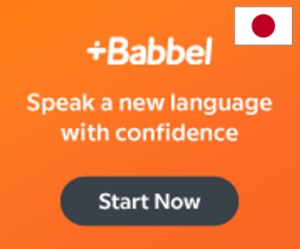Konnichiwa! In this guide, join me on an exploration of the various shoe situations you might encounter as a visitor to Japan, the land of the rising sun, and learn how to gracefully handle them. So, lace up your shoes (but be prepared to take them off!) as we dive into the intriguing world of shoe etiquette in Japan.
Why Take Off Your Shoes?
Taking off shoes in Japan is deeply rooted in cultural and practical reasons. Here are a few key explanations behind this custom:

Planning a trip to Japan?
The Entryway Encounter
Arriving at a traditional Japanese home or some establishments, you’ll be greeted by a small raised area called a genkan. Here, it’s customary to remove your outdoor shoes and change into slippers. While the idea of taking off your shoes might seem peculiar at first, trust me, it’s an opportunity to leave dirt and worries at the door and embrace a sense of cleanliness and respect.
Slipper Swap
Venturing further into the premises, you might encounter another unique situation: bathroom slippers. Yes, you read that right! Some Japanese homes and establishments provide separate slippers for bathroom use. When you enter the restroom, swap your indoor slippers for these designated bathroom slippers. Remember, hygiene is key, and this quirky custom ensures that you keep the bathroom separate from the rest of the living space.

Tatami Adventures
Socks or Bare Feet? Ah, tatami—a traditional Japanese straw mat flooring that exudes an air of elegance and tranquility. When you encounter tatami rooms, it’s customary to remove your slippers or shoes entirely and either wear socks or go barefoot. The smooth, warm touch of the tatami beneath your feet will transport you to a serene state of mind.
Ryokan Revelations
If you’re fortunate enough to stay at a traditional Japanese inn called a ryokan, you’ll come across a fascinating footwear called tabi. These split-toe socks are often worn with traditional attire like kimono or yukata. Embrace the whimsy and slip into a pair of tabi to fully immerse yourself in the ryokan experience. Just remember to remove them before stepping onto the tatami.
Temples and Shrines
Visiting temples and shrines in Japan is a must-do, but don’t forget to be mindful of the shoe etiquette in these sacred spaces. Generally, you’ll be required to remove your shoes before entering the main hall or worship areas. Keep an eye out for shoe racks or designated areas where you can store your footwear. Walking in socked or bare feet, you’ll appreciate the hushed atmosphere that encourages reflection and reverence.
Slip-On Convenience
For those seeking fashionable footwear alternatives, Japan has a variety of slip-on options like geta and zori. Geta are elevated wooden sandals, while zori are flat sandals made from various materials. These stylish and practical choices are ideal for summertime strolls or attending traditional festivals. Just be prepared for a bit of a balancing act on the elevated geta!
Modern Manners
While traditional shoe customs prevail in many places, it’s important to note that in modern establishments like hotels, restaurants, or shopping malls, you can typically wear your shoes throughout. However, do keep an eye out for signs or cues that indicate a change in the shoe policy. Some upscale establishments may still require shoe removal or provide slippers, so be prepared to adapt.
Final Thoughts
Embracing shoe etiquette in Japan is not only a mark of cultural sensitivity but also a delightful way to immerse yourself in the local customs. From the genkan to the tatami rooms, each shoe situation offers a unique glimpse into the Japanese way of life. By following these simple guidelines, you’ll navigate the world of shoes with grace and respect during your visit to Japan.
So, the next time you find yourself standing at the threshold of a traditional Japanese home, ready to embark on a temple exploration, or slipping into a pair of geta for a summer adventure, remember to embrace the shoe customs with a lighthearted spirit.
Take off your shoes, step into the world of slippers, and let your socks or bare feet tread lightly on the tatami. Explore the charm of tabi socks, and gracefully adapt to the shoe policies in contemporary spaces. By doing so, you’ll not only show your appreciation for Japanese culture but also create lasting memories of your journey.
And always remember, whether you’re sliding into slippers, donning geta, or simply going barefoot, it’s the understanding and respect for these customs that truly make your experience in Japan an unforgettable one. So, slip on your cultural curiosity and step into the rich tapestry of Japanese shoe etiquette—your adventure awaits!
Disclaimer: If you use the link on this page to purchase travel insurance, we will receive a fee from Freely, a brand of Cover-More Insurance Services Pty Limited ABN 95 003 114 145 (AFSL 241713) (Cover- More). We do not act for Cover-More or Freely. The information provided is only on the availability of Freely products. We do not give advice & the information provided is not intended to give an opinion or recommendation regarding the product. For information on how to contact Cover-More or Freely refer to the PDS, FSG & TMD which can be found on the Freely website.




Wow, I didn’t know that there is also a spiritual side to the shoe etiquette of Japanese people. I plan to look for a place that sells Japanese-style home shoes because I want to have more comfortable footwear at home. I think that will help me relax better during the weekends.